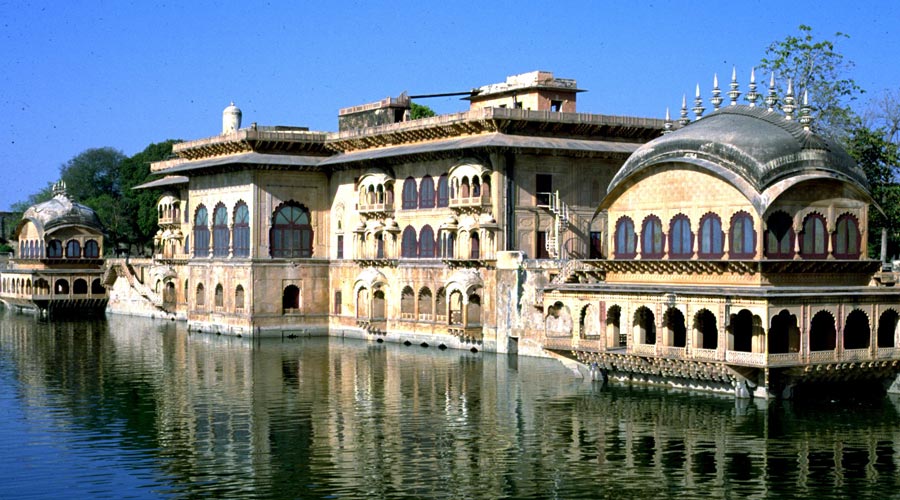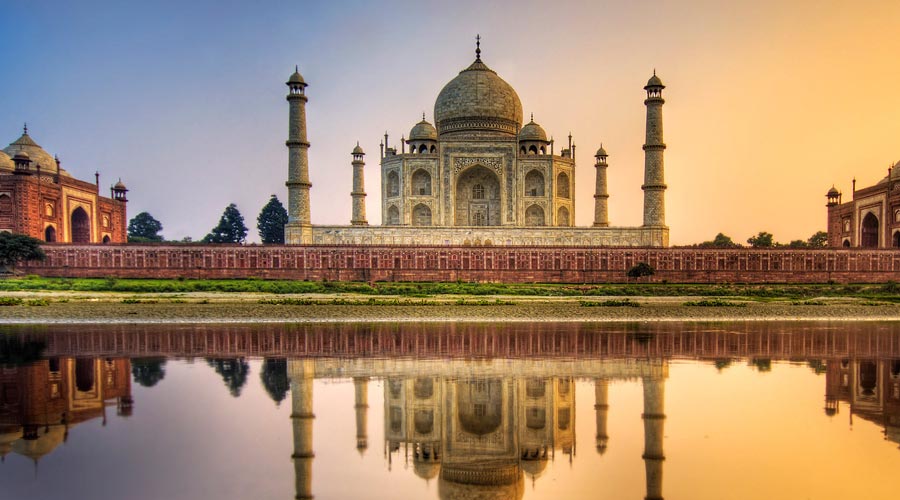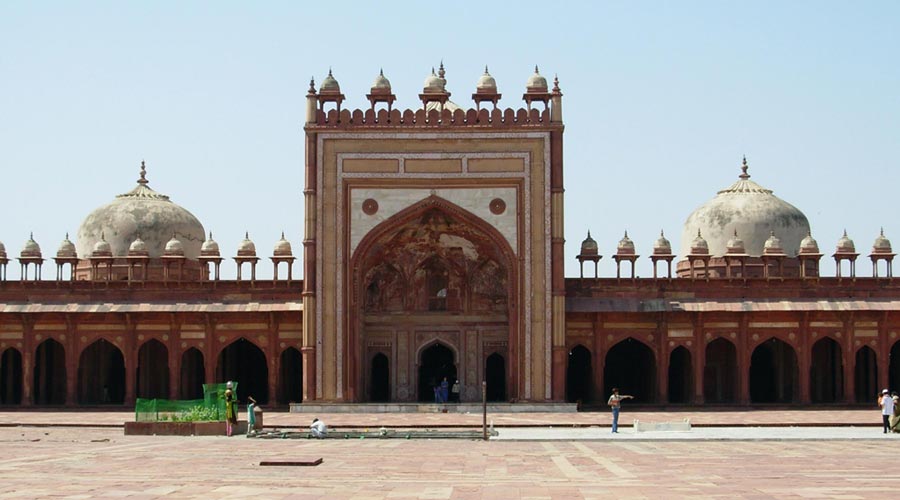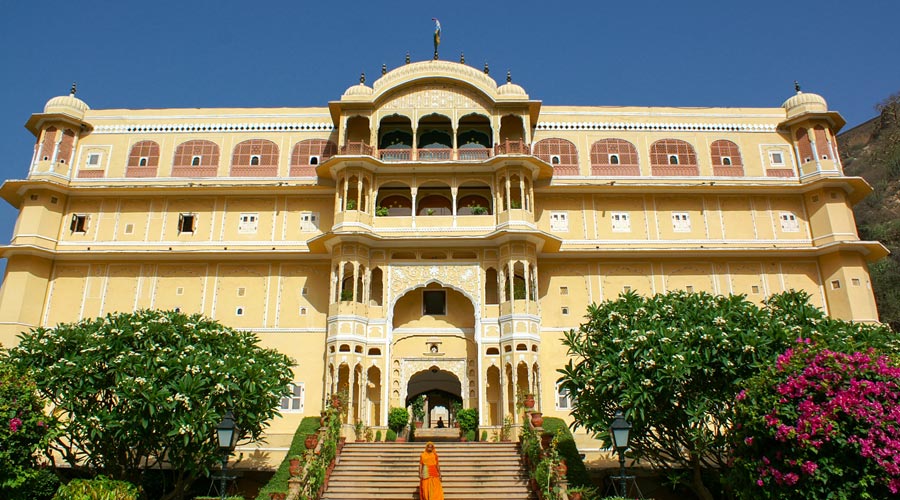Destinations: Delhi-Agra-Fatehpur-Bharatpur-Jaipur-Samode-Delhi
ITINERARY
Day 01 : Delhi
ArriveDelhi . Our representative will meet and assist you at the airport . Transfer to the Hotel for immediate occupancy of the room .Overnight at Hotel.
DELHI, the capital of kingdoms and empires is now a sprawling metropolis with a fascinating blend of the past and the present. It is a perfect introduction to the composite culture of an ancient land. A fascinating mix of historical monuments and modern high-tech industry, colourful nightlife and fabulous shopping and dining options, New Delhi is a feast for the senses. Overnight at Hotel.
Day 02 : Delhi
Morning the tour begin with a visit to Raj Ghat, a memorial to Mahatma Gandhi. He is also known as “father of the nation”. Red Fort is different from the Agra fort and is better planned, because at its back lies the experience gained byShahjahan at Agra, and it was the work of one hand. While the walls, gates and a few other structures in the fort are constructed of red sandstone, marble has been largely used in the palaces.
Jama Masjid, one of Asia’s largest mosques. People stream in and out of the mosque continuously and the presence of a nearby bazaar means that the area is rarely quiet.
Enjoy the rickshaw ride at Old Delhi peddling through the narrow by lanes of ChandaniChowk.
After lunch proceed for a sightseeing tour of New Delhi, which reflects the legacy of the British left behind. The division between New and Old Delhi is the division between the capitals of the British and the Mughals respectively.
Imperial Delhi will include the QutubMinar, the tallest stone tower in India. Qutb-Minar in red and buff standstone is the highest tower in India. All thestory’sare surrounded by a projected balcony encircling the minar and supported by stone brackets, which are decorated with honeycomb design, more conspicuously in the first floor.
Humayun’s Tomb is the first distinct example of proper Mughal style, which was inspired by Persian architecture.
Visit the Lotus temple located in south of Delhi. It is lotus shaped and has rightly been given the name. It is made of marble, cement, dolomite and sand. It is open to all faiths and is an ideal place for meditation and obtaining peace and tranquillity.
The tour also includes a drive past the imposing India Gate, the Parliament building and the RastrapathiBhawan, the President’s residence.
One can also visit the Indira Gandhi Museum. The history of the Gandhi family is well documented in this old building which was the last residence of MrsIndira Gandhi. Overnight at Hotel.
Day 03 : Delhi -Agra
Early morning transfer to the railway station to board train for Agra.
Reach Agra and check into the hotel.
AGRA is caught up in a world of contrasting edifices, of red sandstone and white marble, narrow galleys and quaint buggies, and that irresistible charm that this favorite city of the Mughals still retains. It is not surprising, that modern Agra still reflects its Mughal heritage most conspicuously.
Afternoon visit Sikandra (the Tomb of King Akbar). Akbar himself planned his own tomb and selected a suitable site for it, after his death, Akbar’s son Jahangir completed the construction in 1605-1613.
A walk down the narrow bustling streets of the city will introduce the visitor to the wafting aroma of Mughlai cuisine. Overnight at Hotel.
Day 04 : Agra
Proceed for a sunrise view of the TajMahal. The epitome of love and romance, TajMahal was built by the Mughal Emperor Shah Jahan as a dedication to his beautiful wife MumtazMahal.
TajMahalis an architectural wonder which is always the soul raison-de-etre for every tourist visit to Agra. Built by Shah Jahan, the Taj is a white marble memorial to his beautiful wife MumtazMahal. Apart from its stunning design balance and perfect symmetry, the Taj is also noted particularly for its elegant domes, intricately carved screens and some of the best inlay work ever seen. Return back to the hotel for breakfast.
Afternoon visit of Agra Fort.Built by the famed Mughal emperor Akbar in 1565 AD, the fort is predominantly of red sandstone.It lies on the bend of the river Yamuna, almost in the heart of the town. Akbar built it as his citadel over the years 1563-73 in the finest architectural style. It has imposing gates and walls of red sandstone and a moat.
Itmud-Ud-Duala is also known as BABY TAJ and has a special place in the chronicles of both history as well as architecture. This is precisely because ItmadudDaula is the very first tomb in India that is entirely made out of Marble. This is actually a mausoleum that overlooks the River Yamuna and is a tomb of Mir Ghiyas Beg, a minister in the court of Shah Jahan.Overnight at Hotel.
Day 05 : Agra – FatehpurSikri – Bharatpur – Jaipur
Morning after breakfast drive to Jaipur enroute visit FatehpurSikri, the ancient capital of King Akbar. The deserted city lies along the top of a ridge. This new capital had to be abandoned, only 14 years after it was created, due to lack of water. But the splendid palaces and mosques remain as a dream
Bharatpur bird sanctuary is one of the finest water-bird sanctuaries in the world. Bharatpur Park is a delight for bird watchers. Over 375 species of birds are found here and raised paths, camouflaged by babul trees and undergrowth make viewing easy. A quiet ride by boat in the early hours of the morning is unforgettable experience. Later One can also proceed on a Rickshaw to view the different species of birds in Bharatpur. There after proceed for Jaipur to explore the vivid colors, vibrancy and the heart-warming hospitality of royal Rajasthan. Reach and check into the hotel. Overnight at hotel.
Jaipur is the capital of Rajasthan a romantic realm of resplendent palaces, mighty fortresses and regal Maharajahs that lies in the western deserts. Jaipur is also known as the Pink city. on account of the distinctive color of its buildings. This did not, however, form part of the original plan, but dates back to 1856, when the city was given a wash of pink in honor of a State Visit from Prince Albert.
Day 06 : Jaipur
Proceed for morning excursion to the Amber Fort which was the capital of ancient Rajputs. Enjoy an elephant ride / jeep ride to reach the fort. Walk through the history and immerse yourself in the rich culture.
City Palace is a delightful blend of Mughal and traditional Rajasthani architecture, the City Palace sprawls over one-seventh of the area in the walled city. It houses the Chandra Mahal, ShriGovindDev Temple and the City Palace Museum.
JantarMantar is the largest and the best preserved of the five observatories built by Jai Singh II in different parts of the country. This observatory consisting of outsized astronomical instruments is still in use.
HawaMahal, the ornamental facade of this “Palace of Winds” is a prominent landmark in Jaipur. It is a five-storey structure of sandstone plastered pink encrusted with fine trelliswork and elaborate balconies.
Evening, visit the Birla Temple to learn about the fascinating religion life of Jaipur. The marble structure, built as recently as 1985, houses ornate statues including one of Lakshmi goddess of Wealth and Beauty and Narayan dressed in gaudy robes, representing a Hindu vision of heavenly luxury.Your visit will coincide with the AARTI Ceremony, which involves oil lamps being lit and waved, in order to awake and invoke the deity. Dinner atChokhiDhani.A perfect way to experience the rich culture and heritage of Rajasthan with a visit to ChokhiDhani.Overnight at Hotel.
Day 07 : Jaipur
In the morning after breakfast, visitJaigarh fort, the fort of victory ,built in 1726 by Sawai Jai Singh to reinforce the defences of the Amber ,was the royal treasury for several years . The palace inside the fort has royal apartments remains of a beautiful Mughal garden and water reservoirs.
Nahargarh fort, Beyond the hills of Jaigarh, the fort of Nahargarh ,built in 1737 looks at the city from a sheer ridge in the north The densely forested site was originally the forte of fierce Meena tribe , eventually wrested by Sawai Jai Singh to bolster the defence of Amber.
Galti is 10 km to the city. It is the holy pond lying in the gorge. It was a home to sage Rishi Galav who performed his penance here The tank is perennially fed by a never failing spring of water falling from an outlet shaped like the mouth of cow .
Albert Hall is situated in Ram Niwas Bagh the museum building has a rare collection of artefacts and craft itemssuch as metal work, ivory , carvings, pieces of jewellery , textile , pottery and paintings . Overnight at Hotel.
Day 08 : Jaipur – Samode
Morning after a leisure breakfast , Proceed to a royal village Samode .
Samode according to the Rajputana Gazetteer of 1879 was a large and flourishing town. The Zamidars (landlords) of Samode, the principal thakurs of the state of Amber were the Nathawat clan from Chomu, a branch of the house of Amber, tracing their relation to the Jaipur Maharaja the fabled PrithvirajSinghji the 17th prince of the house of KacchwahaRajputs. After 6 generations in the hands of his descendants Samode was relinquished to the Raj. The 400-year-old Samode Palace has a wealth of frescoes, many of them depicting religious subjects. The highlight is a vast Durbar Hall. Evening take a walk of the Rajasthani village or a camel cart ride.Overnight at Samode.
Day 09 : Samode – Delhi by road
After breakfast, proceed for Delhi. As per the flight timings, transfer to International Airport to board the flight for onward journey.
Please note that, all the passengers are supposed to report at least 3 hours in advance at the airport before catching any international flight due to security reasons in India.












